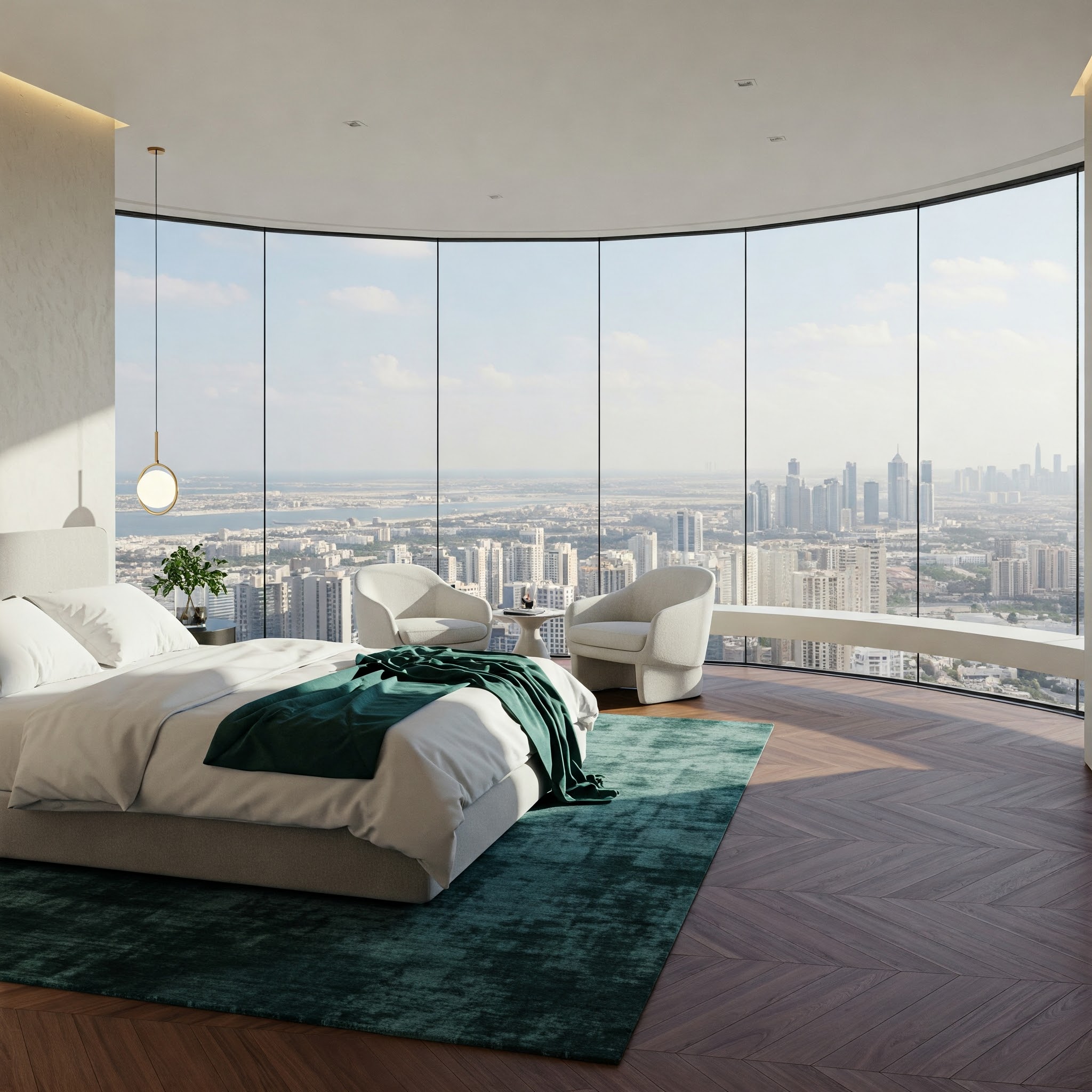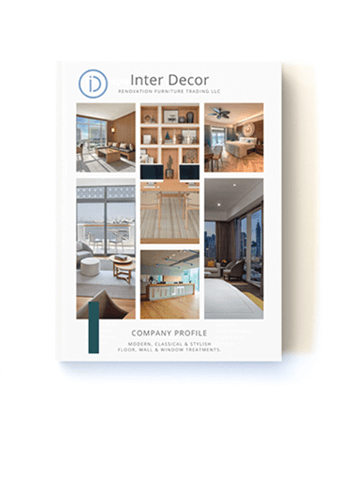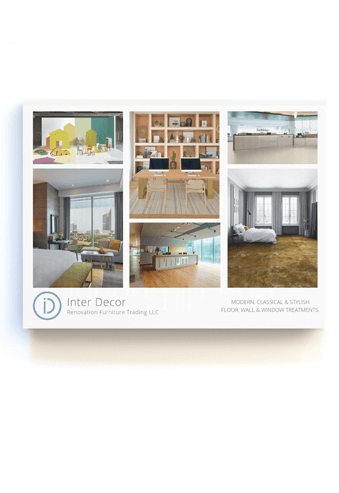10 Factors to Consider When Investing in High-Quality Wood Flooring
In the realm of luxury interior design and high-end construction, the choice of flooring plays a pivotal role in defining the aesthetic and functional qualities of a space. Wood flooring, with its timeless appeal and versatility, stands out as a premium option for discerning property owners and design professionals. This comprehensive analysis delves into the critical factors that must be considered when making a significant investment in wood flooring, particularly in the context of the Middle Eastern market.
1. Wood Types and Quality: The Foundation of Excellence
The selection of wood type is fundamental to the overall quality and performance of your flooring investment. Two primary categories dominate the market:
Solid Hardwood vs. Engineered Wood
- Solid Hardwood: Comprised of a single piece of wood throughout, solid hardwood offers unparalleled durability and the potential for multiple refinishing cycles. It's ideal for areas with stable humidity levels.
- Engineered Wood: Constructed with a hardwood veneer atop a plywood core, engineered wood provides superior stability in fluctuating climates, making it a more suitable choice for the Middle Eastern environment.
Popular Wood Species for Luxury Interiors
Among the myriad options available, two species stand out for their exceptional qualities:
1. Oak: Renowned for its strength and distinctive grain patterns, oak remains a perennial favorite. It offers:
- High durability (Janka hardness rating: 1,290 lbf for Red Oak)
- Wide range of color options
- Excellent stain absorption properties
2. Walnut: Prized for its rich, dark tones and elegant appearance, walnut provides:
- Moderate durability (Janka hardness rating: 1,010 lbf)
- Unique, often figured grain patterns
- Natural resistance to decay
Grading Systems and Quality Indicators
Understanding wood grading is crucial for assessing quality:
- Clear Grade: Minimal knots and color variations, ideal for formal settings
- Select Grade: Slight color variations with minimal knots
- #1 Common: More color variations and knots, suitable for rustic aesthetics
- #2 Common: Significant color variations and knots, often used for a natural look
It's important to note that higher grades do not necessarily equate to better quality; rather, they indicate a more uniform appearance.
2. Aesthetic Considerations: Crafting Visual Appeal
The visual aspect of wood flooring is a critical factor in its selection, especially for luxury interiors and high-end properties.
Color Options and Current Trends
The color palette of wood flooring can dramatically influence the ambiance of a space:
- Light tones (e.g., blonde oak) create an airy, spacious feel
- Medium tones (e.g., walnut) offer warmth and versatility
- Dark tones (e.g., ebony-stained oak) exude sophistication and drama
Current trends in the Middle East lean towards:
- Greige (gray-beige) tones for a modern, neutral backdrop
- Rich, dark browns for traditional and opulent interiors
Grain Patterns and Visual Appeal
The grain pattern of wood flooring contributes significantly to its character:
- Straight Grain: Clean, modern appearance (common in oak)
- Wavy Grain: Dynamic, eye-catching look (often found in walnut)
- Figured Grain: Unique patterns like birdseye or curly (prized in maple)
Plank Sizes and Layout Designs
Plank dimensions and installation patterns can transform the perception of space:
- Wide Planks (7" or more): Create a sense of openness, popular in contemporary designs
- Narrow Planks (2.25" - 4"): Offer a classic, timeless look
- Mixed-Width Planks: Provide visual interest and a custom appearance
Layout patterns to consider:
- Herringbone: Adds sophistication and visual movement
- Chevron: Creates a bold, geometric statement
- Parquet: Offers intricate designs for formal spaces
3. Durability and Maintenance: Ensuring Longevity
The longevity of wood flooring is a key consideration, particularly in high-traffic areas or luxury residential settings.
Wear Resistance and Longevity
Factors affecting durability include:
1. Wood Hardness: Measured by the Janka scale, with higher numbers indicating greater resistance to denting and wear.
- Example: Brazilian Walnut (Ipe) has a Janka rating of 3,684 lbf, making it exceptionally durable.
2. Finish Quality: Modern polyurethane finishes offer superior protection against wear and tear.
- Aluminum oxide-infused finishes can increase wear resistance by up to 40%.
Refinishing Potential
The ability to refinish wood flooring extends its lifespan and maintains its aesthetic appeal:
- Solid hardwood can typically be refinished 6-8 times over its lifetime.
- Engineered wood's refinishing capacity depends on the thickness of the veneer layer, usually allowing for 1-3 refinishes.
Cleaning and Care Requirements
Proper maintenance is crucial for preserving the quality of wood flooring:
- Regular sweeping and vacuuming to prevent abrasive particle accumulation
- Use of pH-neutral cleaning products specifically formulated for wood floors
- Immediate attention to spills to prevent staining or water damage
4. Environmental Impact and Sustainability
In an era of increasing environmental consciousness, the sustainability of wood flooring is a significant consideration.
Eco-friendly Options and Certifications
Several certifications ensure the environmental responsibility of wood flooring:
1. Forest Stewardship Council (FSC) Certification: Guarantees that the wood comes from responsibly managed forests.
2. Programme for the Endorsement of Forest Certification (PEFC): Promotes sustainable forest management practices globally.
3. Sustainable Forestry Initiative (SFI): Focuses on North American forests and responsible sourcing.
Reclaimed Wood Alternatives
Reclaimed wood flooring offers a unique combination of sustainability and character:
- Sourced from old buildings, barns, or industrial structures
- Provides a distinctive aged appearance with historical significance
- Reduces demand for new timber harvesting
According to a report by Grand View Research, the global reclaimed lumber market size was valued at USD 49.27 billion in 2019 and is expected to grow at a compound annual growth rate (CAGR) of 4.6% from 2020 to 2027.
5. Installation and Customization
The installation process and customization options are critical factors in achieving the desired outcome for wood flooring.
Professional Installation Services
Expert installation is crucial for ensuring the longevity and performance of wood flooring:
- Proper subfloor preparation and moisture testing
- Precise cutting and fitting to accommodate room irregularities
- Correct application of adhesives or nailing techniques
In the Middle East, where climate control is essential, professional installers can address unique challenges such as:
- Acclimation of wood to local humidity levels
- Implementation of moisture barriers
- Selection of appropriate expansion gaps
Custom Design Possibilities
Wood flooring offers extensive customization options:
- Inlays and borders for creating unique patterns
- Mixed species installations for contrasting colors and textures
- Custom staining to achieve specific color tones
Climate Considerations for the Middle East
The arid climate of the Middle East presents specific challenges for wood flooring:
- Low humidity can cause wood shrinkage and cracking
- High temperatures may accelerate the aging process of some wood species
Solutions include:
- Use of engineered wood with enhanced stability
- Installation of whole-house humidification systems
- Selection of wood species known for their dimensional stability (e.g., Teak)
6. Long-term Value and ROI
Investing in high-quality wood flooring can significantly impact property value and offer substantial returns over time.
Impact on Property Value
Wood flooring is consistently ranked as a top feature for increasing home value:
- According to the National Wood Flooring Association, homes with wood floors sell faster and for more money than those without.
- A study by the National Association of Realtors found that 54% of home buyers were willing to pay more for a home with hardwood flooring.
Cost-effectiveness Over Time
While the initial investment in wood flooring may be higher than other options, its longevity provides superior cost-effectiveness:
- A well-maintained wood floor can last for generations, often outliving the building itself.
- The ability to refinish rather than replace reduces long-term costs.
- Energy efficiency benefits, as wood flooring can help insulate a room and reduce heating costs.
Conclusion: Making an Informed Decision
The selection of high-quality wood flooring is a multifaceted decision that requires careful consideration of numerous factors. From the choice of wood species and grade to installation methods and long-term maintenance, each aspect plays a crucial role in the overall success of the investment.
For homeowners in Dubai, interior designers, architects, and real estate investors, understanding these factors is essential for making informed decisions that align with both aesthetic goals and practical requirements. By carefully weighing the options and consulting with industry professionals, one can ensure that their investment in wood flooring not only enhances the beauty and value of their property but also stands the test of time in the unique climate and cultural context of the Middle East.
In the ever-evolving landscape of luxury interiors and high-end construction, wood flooring remains a timeless choice that combines natural beauty with functional excellence. As technology and sustainability practices continue to advance, the options for creating truly exceptional wood floors will only expand, offering even greater potential for those willing to invest in quality and craftsmanship.






